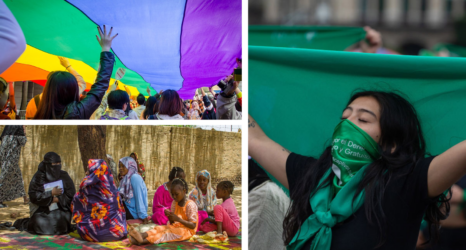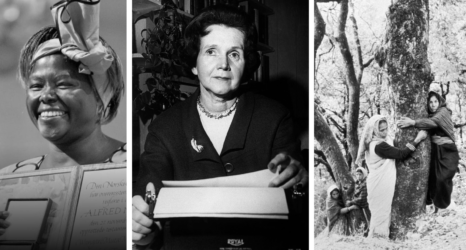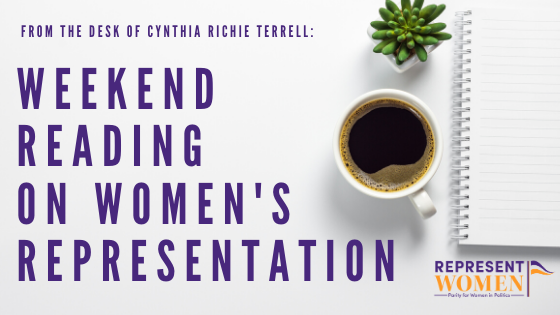
Weekend Reading on Women’s Representation is a compilation of stories about women’s representation in politics, on boards, in sports and entertainment, in judicial offices and in the private sector in the U.S. and around the world—with a little gardening and goodwill mixed in for refreshment!
This month’s 60th birthday celebration and long-awaited vacation were wonderful and filled me with a renewed passion for change. Witnessing the state of our democracy, both domestically and internationally, compels me to keep pushing forward with RepresentWomen’s mission to build women’s political power. Women face significant structural barriers when entering politics, and our evidence-based solutions aim to dismantle these obstacles, transforming the political landscape for good.
Next month, we continue the critical conversation about the barriers Black women face when they enter and serve in the political arena. The many obstacles they face significantly impact their physical and mental health and thus must be explored. Join us Wednesday, May 8, for our Breaking Barriers for Black Women Candidates virtual roundtable discussion, bringing together Black women experts to shed light on these unique challenges and the solutions needed to level the playing field.
In the meantime, dive into an op-ed written by our national partnerships manager, Victoria Pelletier. A member for the Portland City Council herself, Victoria shares her firsthand perspective of Black women in politics.
This week, read about the violent experiences women election workers face, especially since the 2020 election; explore the intersection between environmental justice and feminism; celebrate Fort Wayne’s first Black woman mayor; and multiple women candidates running for seats in Beaufort County, S.C. Finally, learn about women’s representation in the Indian elections.
India Has the Most Significant Representation of Women—But Only As Voters
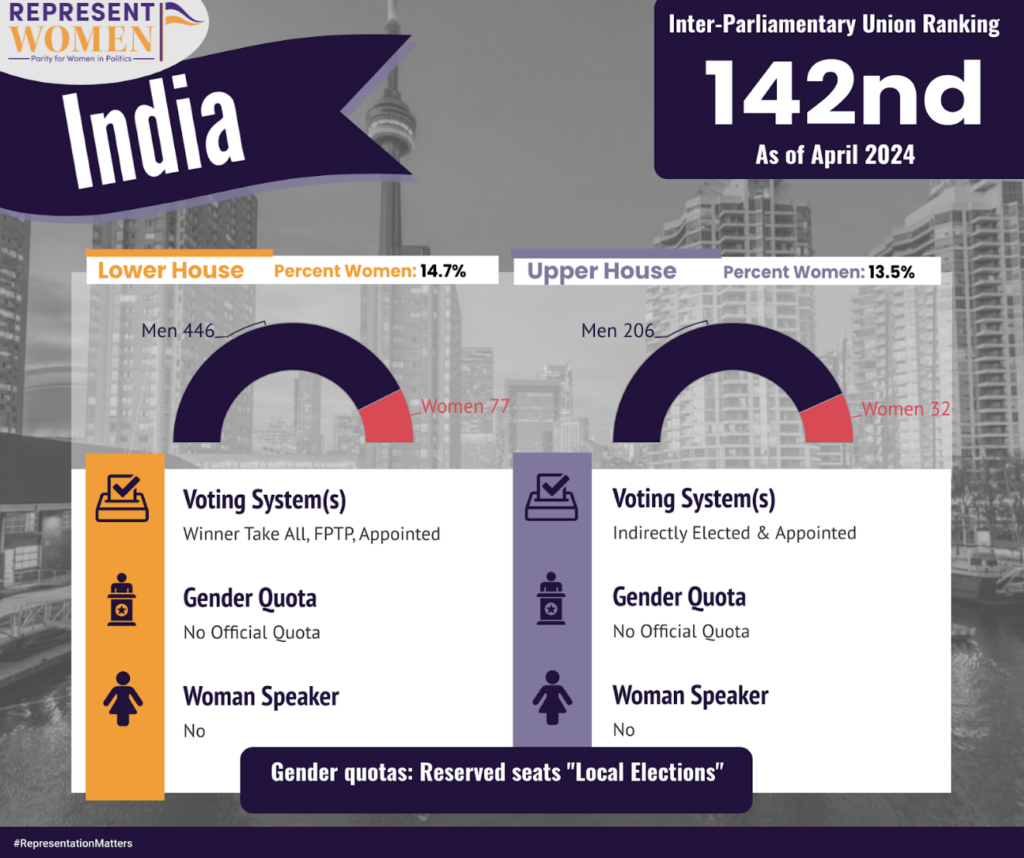
The story of Indian women in politics remains a topic of speculation. In an article penned by Kalpana Sharma in The Hindu, she discussed the first phase of the 2024 Indian general elections and how women are absent from the most significant elections this year.
This election candidates show incremental changes, with women comprising only 8 percent in the first phase, marking a one percent decrease from the 2019 elections. However, these numbers could slightly change by the end of the election cycle. This also doesn’t match the increasing number of women voters, which is even higher than men voters, with 67.18 percent women and 67.01 percent men, respectively.
Women candidates are underrepresented in several states and under-represented in others, including Punjab, with only two candidates. Jammu-Kashmir and Ladakh only have one woman candidate, and in larger states like Tamil Nadu, women candidates have a long way to go to be comparable with male candidates.
Although India does not apply gender quotas in its electoral laws for the Sansad (Parliament), the Biju Janata Dal and the All India Trinamool Congress promised to implement voluntary party quotas in Odisha and West Bengal.
Even though the elections don’t offer promise for women’s parliamentary representation in India, it’s still one of the most significant international elections to watch this year.
The only States where political parties have committed to field more women are Odisha (Biju Janata Dal, 33%) and West Bengal (All India Trinamool Congress, AITMC). In 2019, 41% of AITMC’s candidates were women.
Will the picture change if the Women’s Reservation Act is finally implemented? It was passed last year after being on a slow burner since 2008 when it was introduced.
The experience of elections so far has shown that barring a couple of exceptions, no political party is willing to commit to ensuring that one-third of its candidates are women for either Lok Sabha elections or State assemblies.
Threats and Harassment Persist for Women Leading U.S. Election Offices
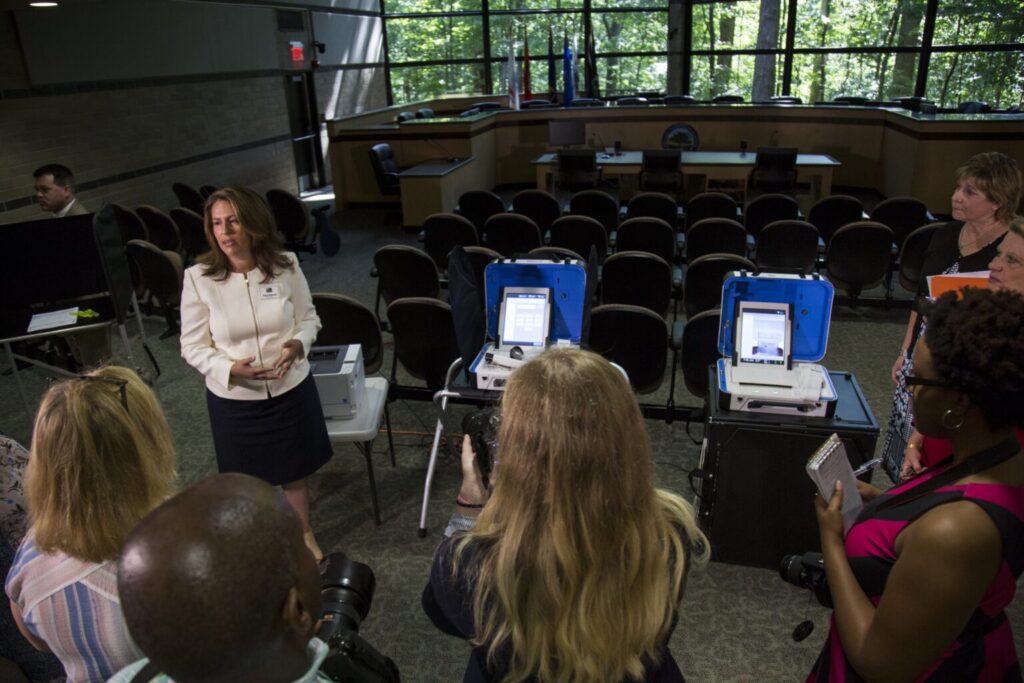
The Guardian’s article discusses the experiences of women who hold positions overseeing elections in the U.S., shedding light on the pervasive threats and harassment they face, especially following the 2020 election. Despite these challenges, women continue to hold a majority of election-related positions. Nonetheless, the hostile environment has increased turnover and reluctance among women to seek or serve in office.
The preponderance of women in election roles is rare in government and politics. The 80% number comes from a 2020 Democracy Fund/Reed College survey of local elections officials. Researchers there posit that these roles were traditionally seen as more clerical and delegated to women. They also could be one way that local party leaders let women “through the gate” into elected office because the roles didn’t typically translate into higher office. Some in the survey said that their roles allowed them to better manage work and home life.
Koppes said a penchant for being detail-oriented and focused on the community make elections a good fit for women.
The Bridging Divides Initiative at Princeton University, along with CivicPulse, has conducted surveys of people in local offices who have reported an “unacceptably high baseline of threats and harassment.” Still, there is a significant difference between the experiences of men and women in these local elected offices, said Shannon Hiller, the initiative’s executive director.
Our partnerships director, Katie Usalis, also wrote an article on the threats women election officials face. Read more on Ms. magazine.
Exploring the Roots of Environmental Feminism
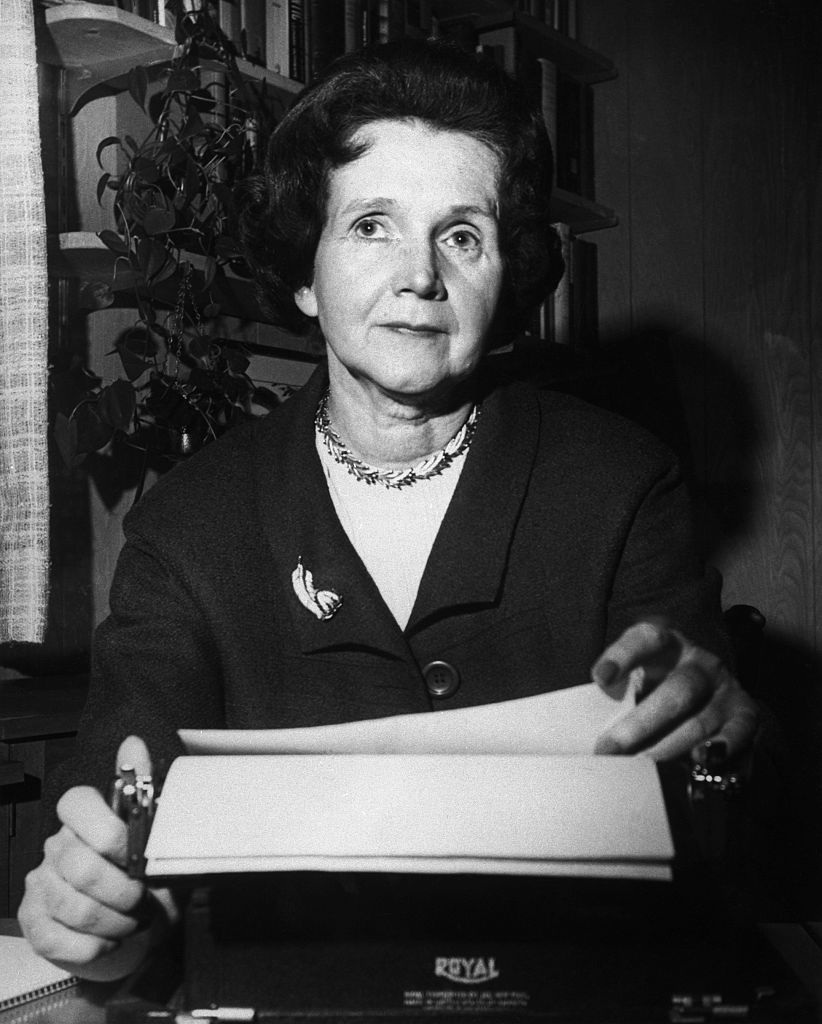
Rebecca Kormos published an article in Ms. about the intersection of environmental and feminist movements. Both movements confront oppression and exploitation, united in dismantling the status quo for the thriving of women and nature. Drawing from perspectives of ecosocialist feminism, Marxist ecofeminism, eco-womanism, and Indigenous feminism, the article emphasizes the need for unity between environmental and feminist movements, particularly in the face of climate change and social injustices.
A more recent connection highlighting the link between women and nature is Climate Clock’s Gender Parity Lifeline, underscoring the urgent need to address systemic barriers women face running for office.
In the 1980s, as a response to social and environmental injustices, the environmental justice movement was born. Initiated and led primarily by Black American thought leaders and activists in the United States, such as Robert D. Bullard and Catherine Coleman Flowers, the movement has drawn attention to the ways in which poor communities have been disproportionately affected by pollution, resource extraction, and disposal of waste.
As the environmental and feminist movements started to splinter, the environmental justice movement sought to bring us back together again with the common goal to protect nature with equality and fairness. If ever there was a time for the environmental and feminist movements to unite again, it is now.
How does Mother Earth live now within the environmental and feminist movements? Is it time to de-gender the earth? Nature and women have suffered a long history together of exploitation and subordination. They have been put into categories where they are essentialized and viewed as powerless, passive, or sexualized. When the exploitation of one is justified or permitted, it facilitates the exploitation of the other. When we stand up against patriarchy, we are standing up for the rights of the earth as well.
Fort Wayne Chooses its First Black Woman Mayor After the Late Mayor’s Death
This past Saturday, City Council member Sharon Tucker, a member of the Democratic Party, assumed the role of Fort Wayne’s new Mayor following the passing of Mayor Tom Henry due to a medical emergency.
Tucker’s appointment marks a significant milestone as she is the first Black woman and the second woman in history to hold the position in Fort Wayne, Indiana.
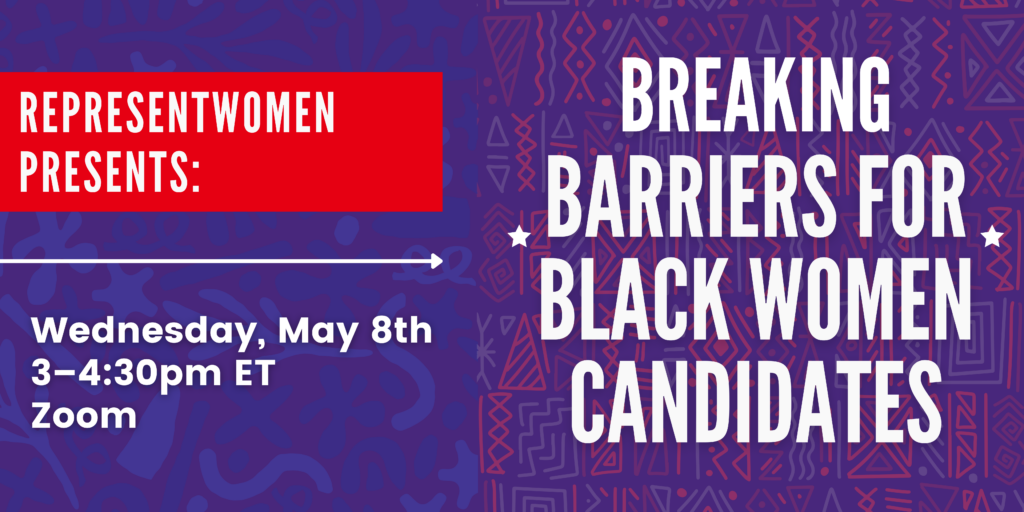
Associated Press via U.S. News reports:
A Fort Wayne city councilwoman was chosen Saturday as the new mayor of Indiana’s second most populous city and its first Black leader during a caucus to replace its late mayor, who died in March.
Councilwoman Sharon Tucker, a Democrat, will also become the second woman to serve as mayor of the northeastern Indiana city. She was elected in the second round of voting during a Democratic caucus when she met the requirement of 50% of the votes plus one, The Journal Gazette reported.
Seven candidates, including Indiana Democratic House leader state Rep. Phil GiaQuinta, ran in Saturday’s party caucus, where 92 precinct committee members cast votes.
To celebrate the release of our brief, “Breaking Barriers for Black Women Candidates,” we’re hosting a virtual roundtable discussion featuring Black women experts who will shed light on the often overlooked, unique challenges Black women encounter in their political campaigns and explore solutions for creating a more equitable playing field. The event will occur Wednesday, May 8, from 3-4:30 p.m. ET.
Women in Beaufort County, S.C., Making a Play to Unseat the GOP on the Democratic Ticket
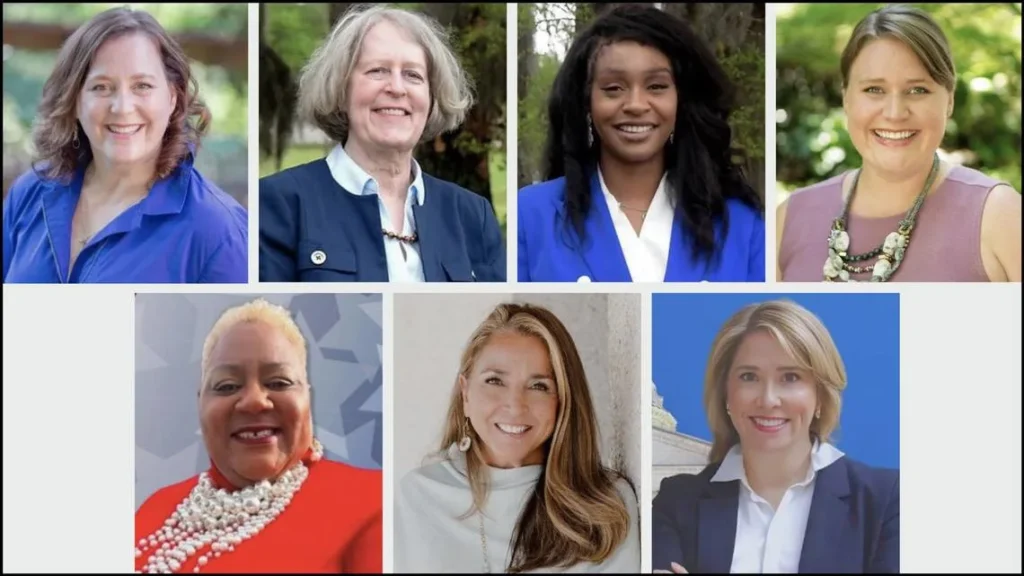
In Beaufort County, S.C., the Democratic Party celebrates multiple women candidates running, many of whom are new to the world of politics. Kathleen Hughes, chair of the Beaufort County Democratic Party, said this was not an intentional choice but a reflection of women inspired to effect positive change within their communities.
Our excellent partners at She Should Run released a report addressing factors that may inspire more women to pursue political office. A vital point highlighted is that women are not solely focused on gender equality; they are also deeply invested in issues concerning climate change, the economy, reproductive health, racism, and gun violence.
Lisa Wilson from The Island Packet reports:
“It just happened organically that women are fired up and have chosen to step up and run,” she explained. “They are invested in making a difference in this election.”
A report by the nonpartisan She Should Run last year estimated that just over 22% of adult women in the United States could be interested in seeking elected office to increase women’s representation in government. The issues motivating them have to do with the economy, climate change, reproductive health, racism, and gun violence.
Women are most likely to take action on issues related to children, health, education, and poverty, the report says.
“The generally accepted judgment about women today is that they are motivated by gender equality as a standalone issue for seeking change. In reality, women are motivated by the everyday ‘kitchen table’ issues that show up in their lives,” the report says.
There are 46 senators total in South Carolina’s Senate. Of the 124 representatives in South Carolina’s House, 21 are women, including Erickson, a Republican from Beaufort.
Raise Your Voice and Vote!
Last week, I asked readers to vote on their favorite women artists, and you all voted for Frida Kahlo, who revolutionized self-expression through her vivid and introspective paintings.
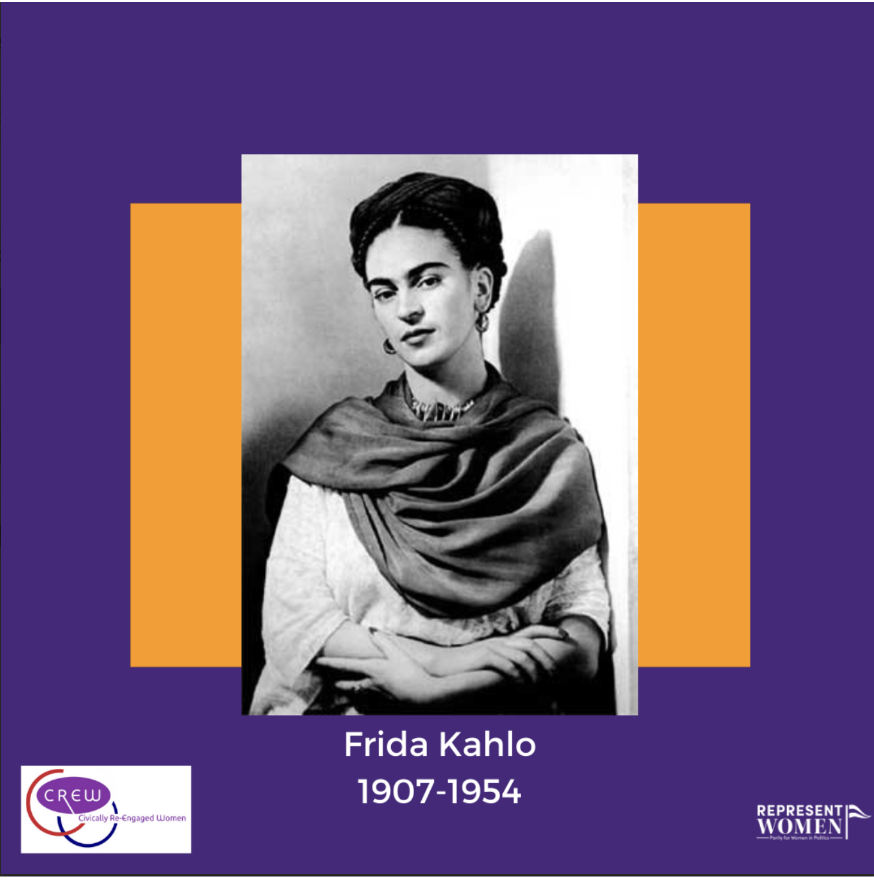
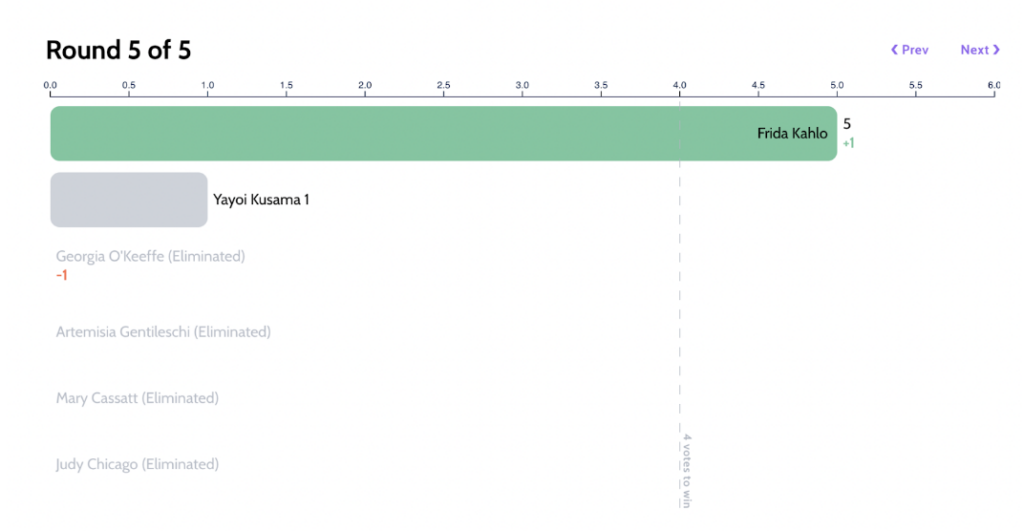
In honor of Earth Day this week, I want to survey readers about what they want to see in my garden. Vote for your favorite plant with this ranked-choice voting poll!
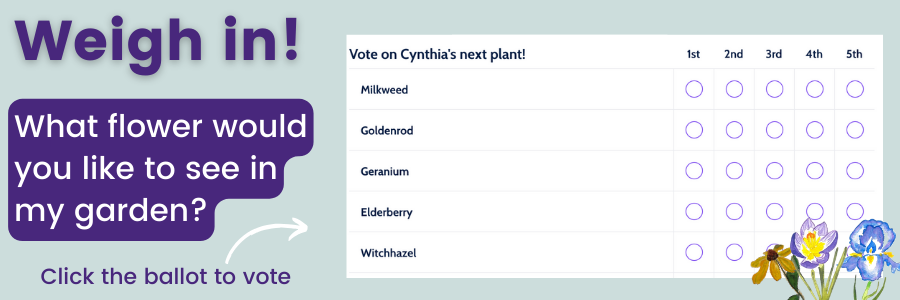
This past week, our outreach ,anager, Alissa Bombardier Shaw, delivered a compelling presentation on “Building Women’s Political Power through Democracy Reform” during the Fix Democracy First Happy Hour. She highlighted our 2023 Gender Parity Index, 2023 RCV Memo, and Why Women Won in 2021 report on NYC and shared the opportunities taking place on the Women’s Power Collaborative with a great group of over 50 advocates, leaders, and supporters.
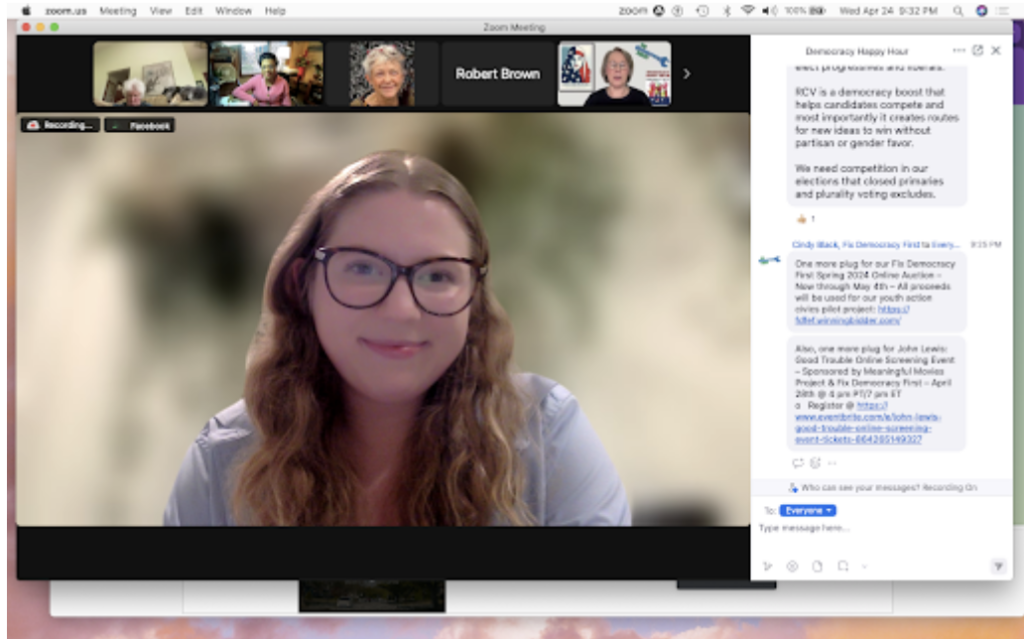
Thank you to Cindy Black for the opportunity to showcase our great work at RepresentWomen!
Up next:
U.S. democracy is at a dangerous inflection point—from the demise of abortion rights, to a lack of pay equity and parental leave, to skyrocketing maternal mortality, and attacks on trans health. Left unchecked, these crises will lead to wider gaps in political participation and representation. For 50 years, Ms. has been forging feminist journalism—reporting, rebelling and truth-telling from the front-lines, championing the Equal Rights Amendment, and centering the stories of those most impacted. With all that’s at stake for equality, we are redoubling our commitment for the next 50 years. In turn, we need your help, Support Ms. today with a donation—any amount that is meaningful to you. For as little as $5 each month, you’ll receive the print magazine along with our e-newsletters, action alerts, and invitations to Ms. Studios events and podcasts. We are grateful for your loyalty and ferocity.




